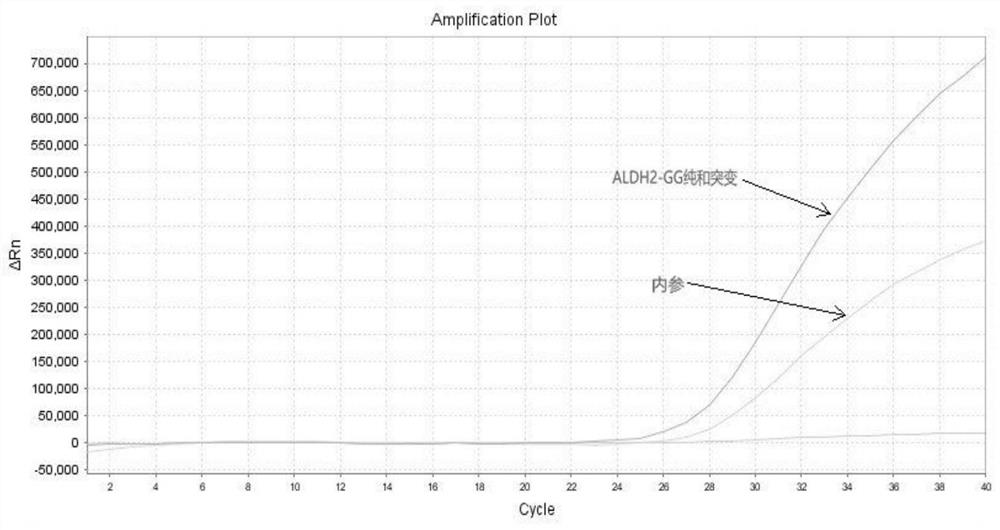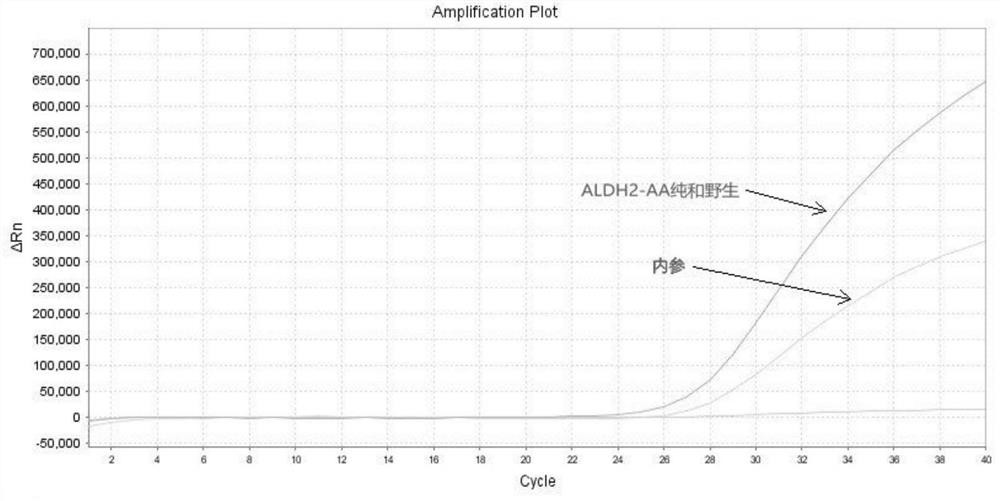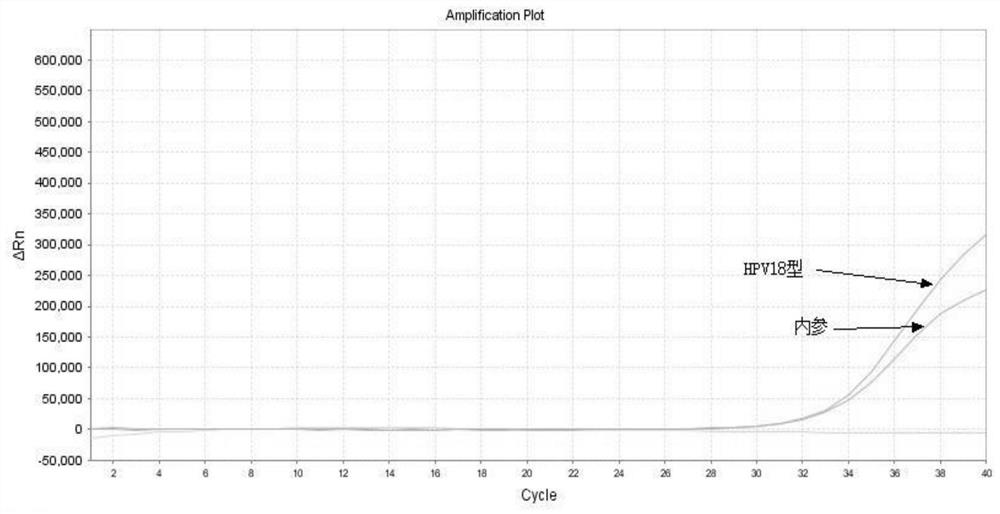A gene detection kit free from nucleic acid purification
A detection kit and sodium chloride technology, applied in the fields of molecular biology and gene diagnosis, can solve the problems of unsolved sample DNA extraction, cumbersome sample DNA extraction steps, concentration and cross-contamination of open tubes, etc., and shorten the detection cycle. , saving detection cost, low cost effect
- Summary
- Abstract
- Description
- Claims
- Application Information
AI Technical Summary
Problems solved by technology
Method used
Image
Examples
Embodiment 1
[0039] Kit preparation:
[0040] Sample Diluent 1:
[0041] 0.1M sodium hydroxide, 100mM sodium chloride
[0042] PCR reaction solution 1 is shown in Table 1:
[0043] Table 1 PCR reaction solution component 1
[0044]
[0045]
[0046] When the kit was used for B5801 gene detection, the primers and probe sequences used were as shown in Table 2:
[0047] Table 2 Primers and probes for B5801 gene detection
[0048]
Embodiment 2
[0050] Sample Diluent 2:
[0051] 0.04M NaOH 200mM NaCl
[0052] PCR reaction solution 2 is shown in Table 3 or Table 4:
[0053] Table 3 PCR reaction solution components 2-1
[0054]
[0055]
[0056] Table 4 PCR reaction solution components 2-2
[0057] components (μl) 10×PCRBuffer 2 2mMdNTPs 1 10 μM Primer 1 1 10 μM Primer 2 1 10 μM fluorescent probe 2 1 Internal reference gene primer 1 1 Internal reference gene primer 2 1 Internal reference gene fluorescent probe 1 DMSO (dimethyl sulfoxide) 1 Tween-20 1 Sorbitol 2 anti-jamming polymerase 0.6
[0058] When the kit was used for ALDH2 gene detection, the primers and probe sequences used were as shown in Table 5:
[0059] Table 5 Primers and probes for ALDH2 gene detection
[0060]
[0061]
Embodiment 3
[0063] The nucleic acid amplification carried out by the kit of the present invention mainly includes the following steps:
[0064] Collection of human peripheral blood samples
[0065] Use a disposable sterile syringe to extract 1-2 ml of venous blood from the subject, inject it into a blood collection tube containing EDTA anticoagulant, and immediately invert the blood collection tube gently for 5 to 10 times to mix the anticoagulant and venous blood thoroughly .
[0066] sample dilution
[0067] Sample diluent:
[0068] 0.1M sodium hydroxide, 100mM sodium chloride
[0069] Take 10 μL of the collected human peripheral blood sample and add it to 290 μL of the sample diluent, shake and mix well, and centrifuge briefly to collect the liquid to the bottom of the tube.
[0070] Reaction solution preparation
[0071] The anti-interference PCR reaction solution, primer-probe mixture, positive control and negative control were mixed to prepare a fluorescent PCR reaction solutio...
PUM
 Login to View More
Login to View More Abstract
Description
Claims
Application Information
 Login to View More
Login to View More - R&D
- Intellectual Property
- Life Sciences
- Materials
- Tech Scout
- Unparalleled Data Quality
- Higher Quality Content
- 60% Fewer Hallucinations
Browse by: Latest US Patents, China's latest patents, Technical Efficacy Thesaurus, Application Domain, Technology Topic, Popular Technical Reports.
© 2025 PatSnap. All rights reserved.Legal|Privacy policy|Modern Slavery Act Transparency Statement|Sitemap|About US| Contact US: help@patsnap.com



